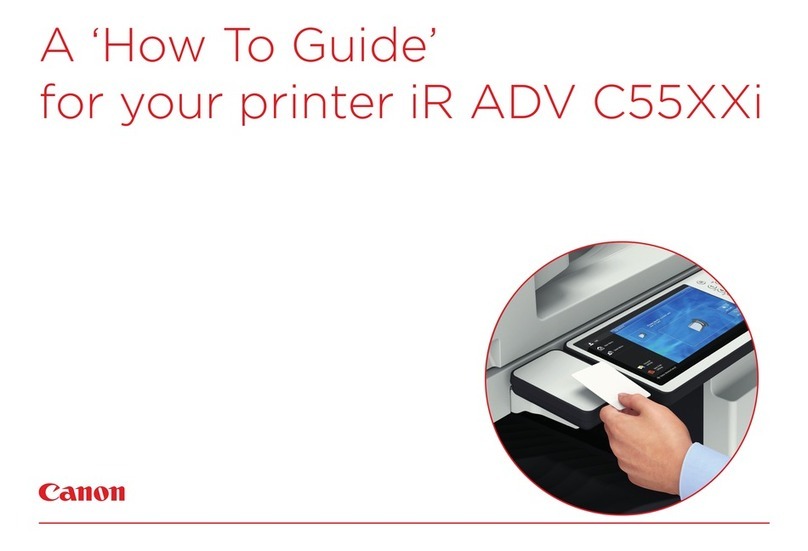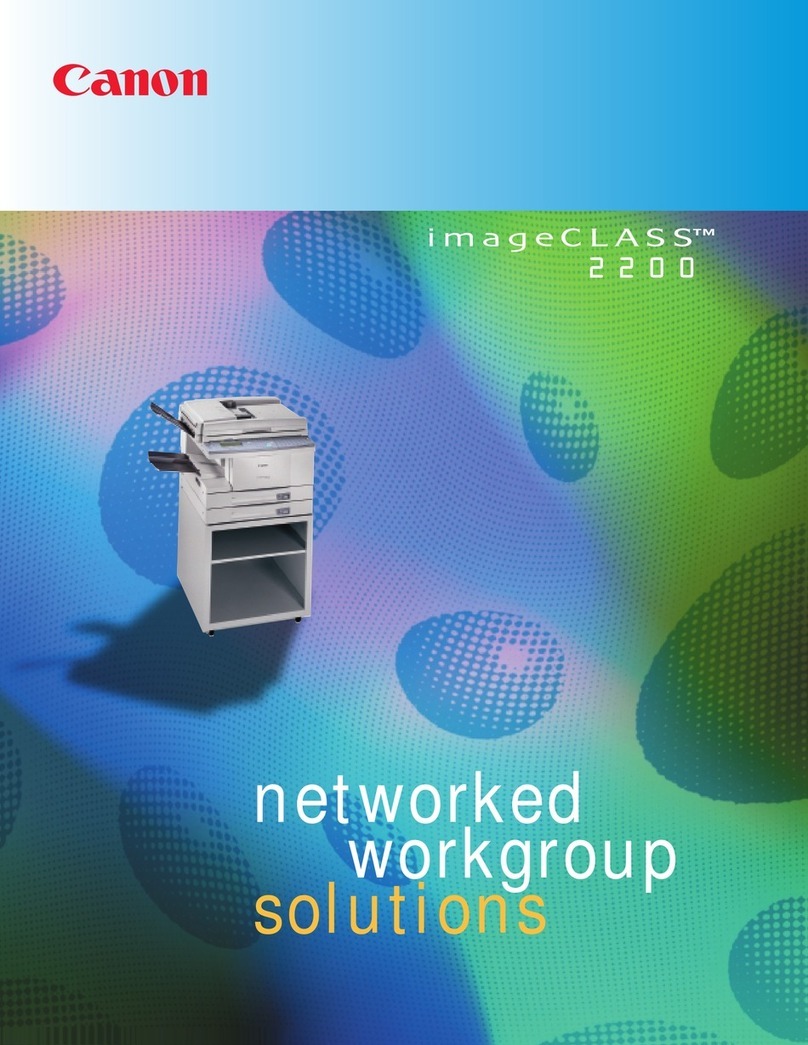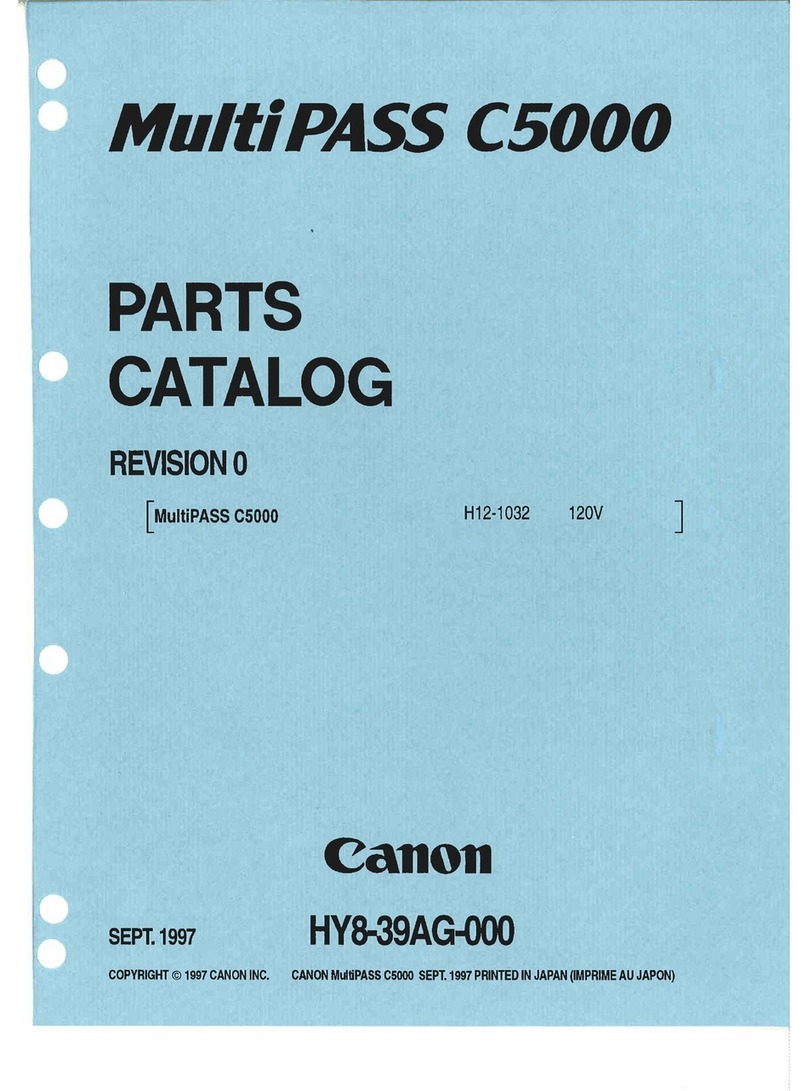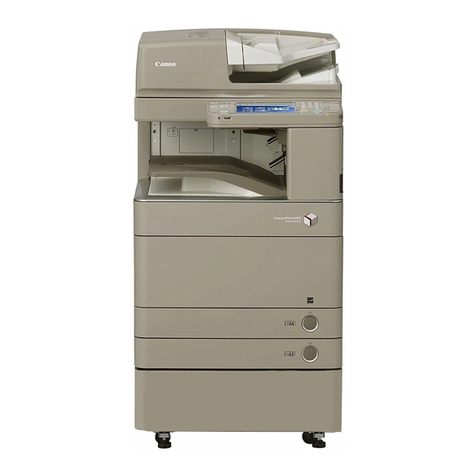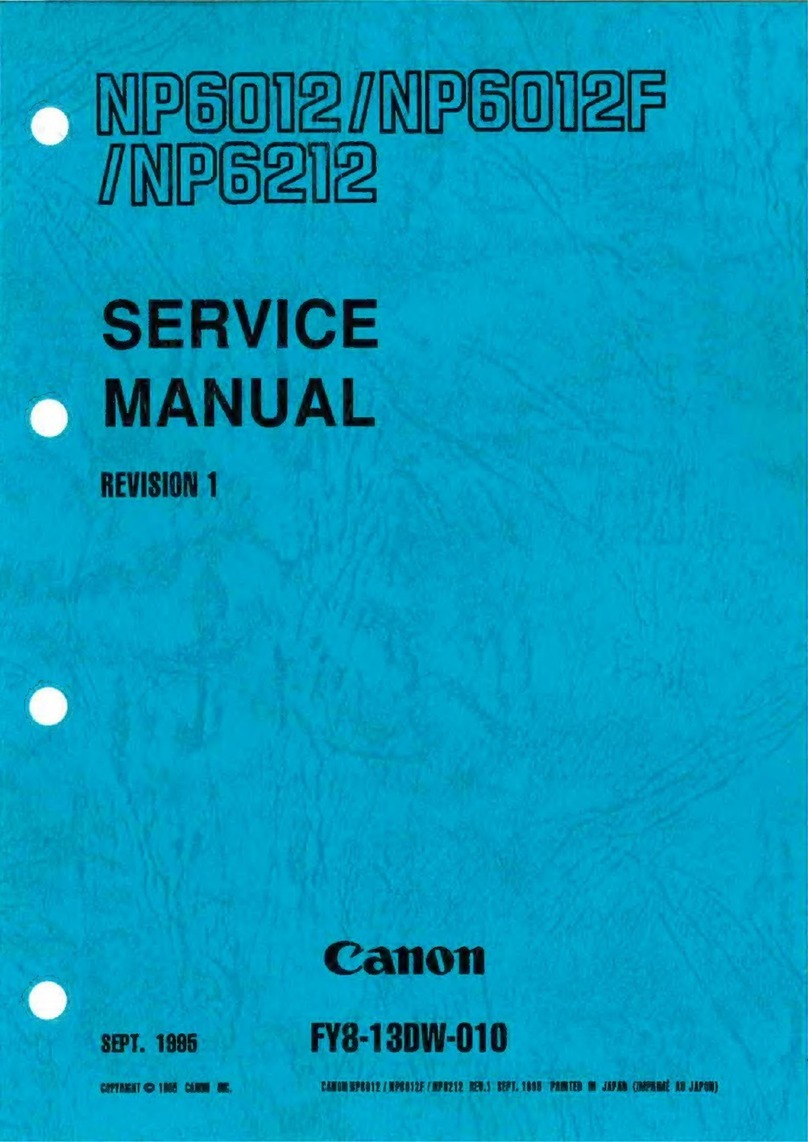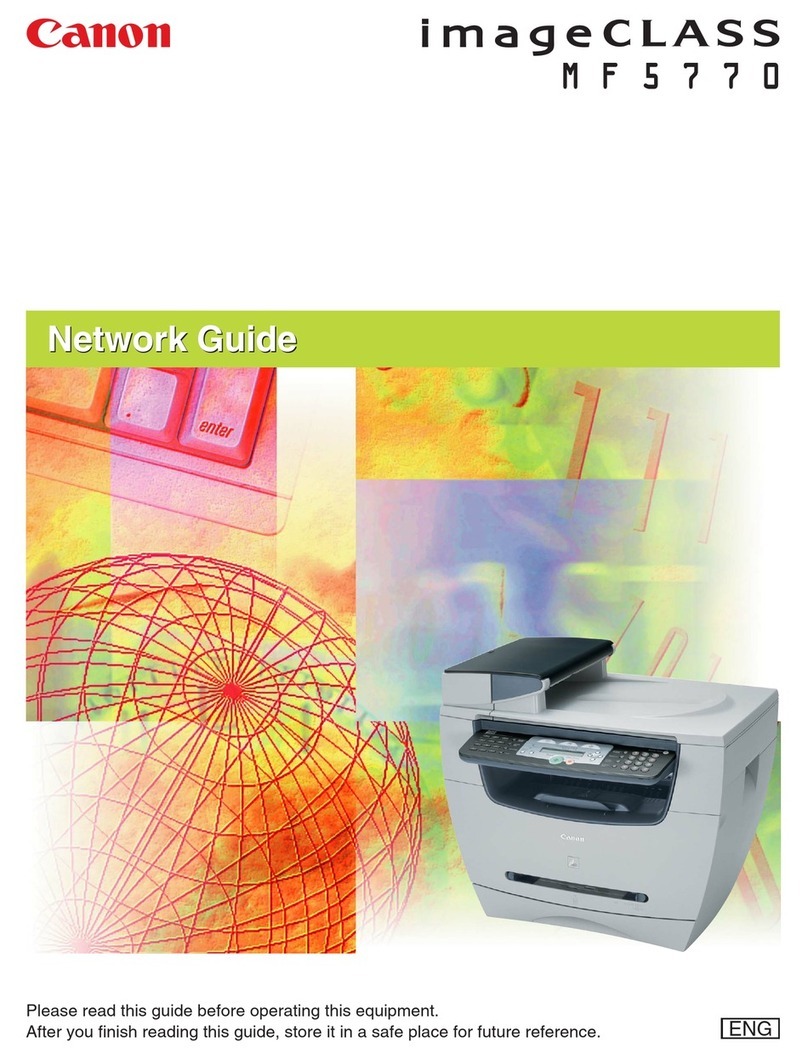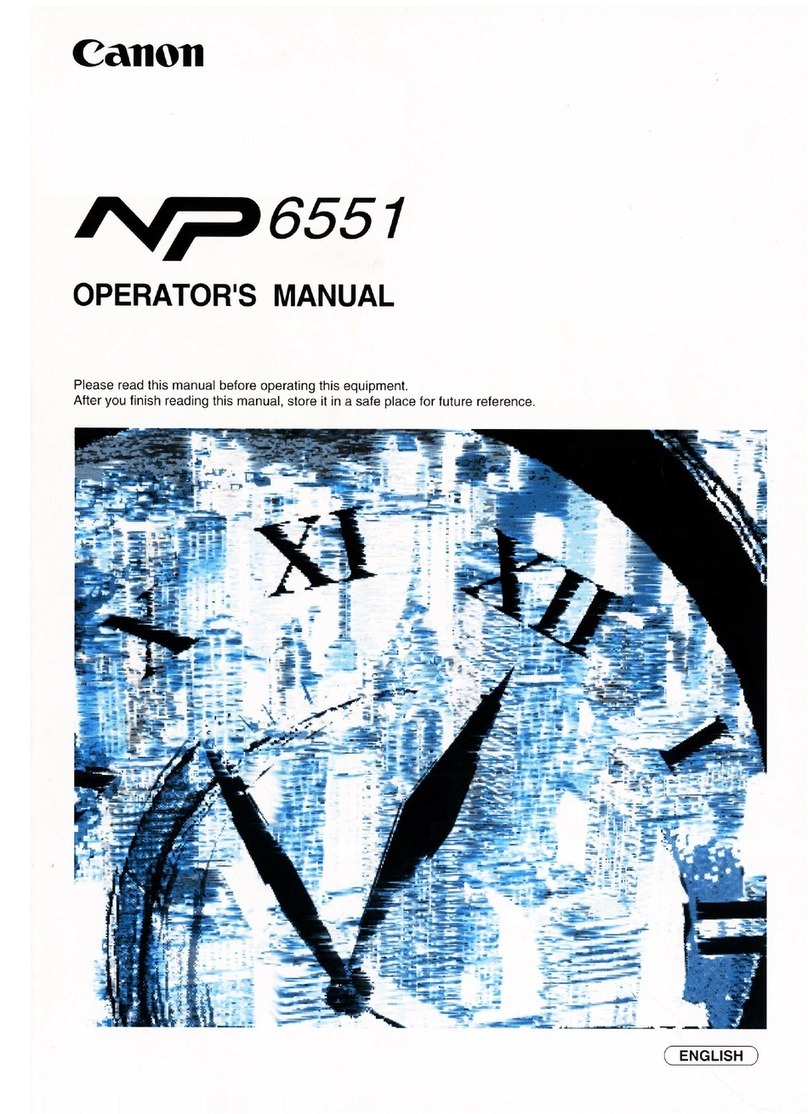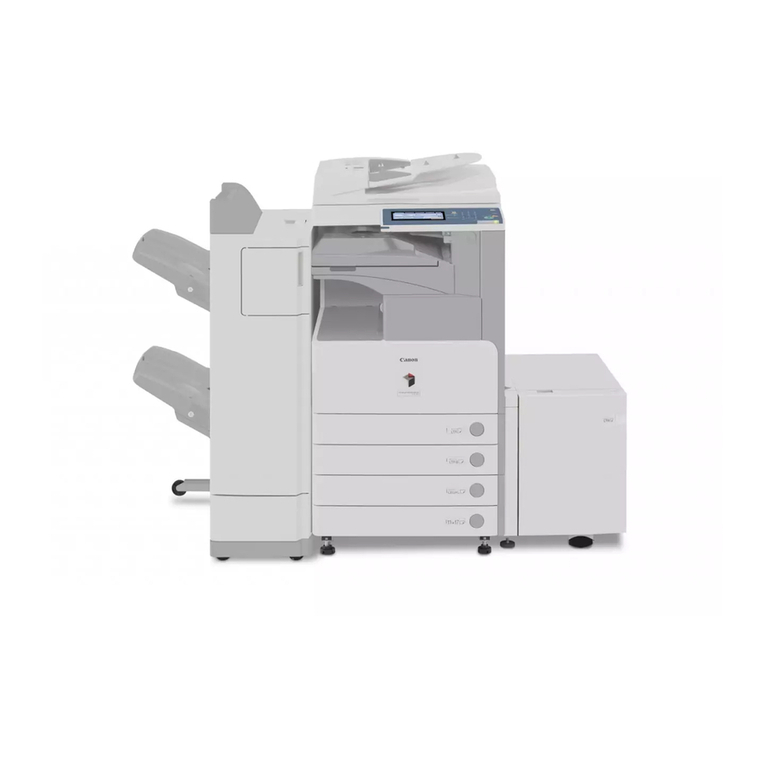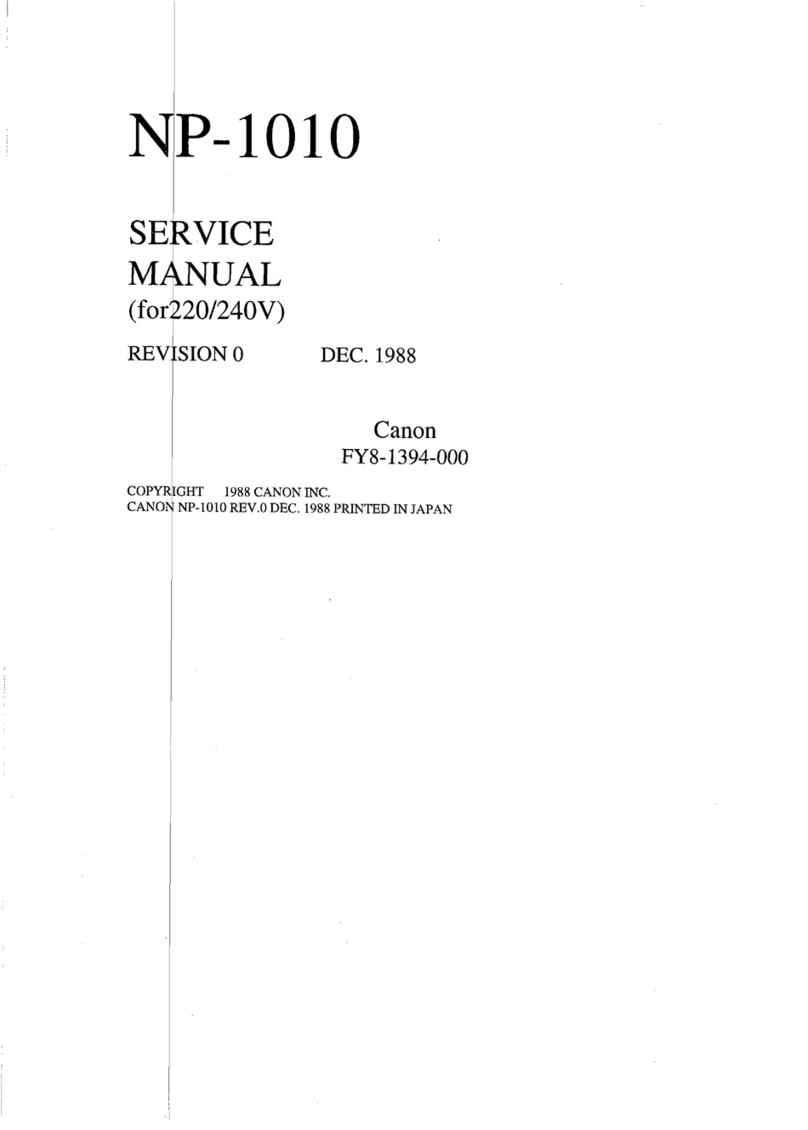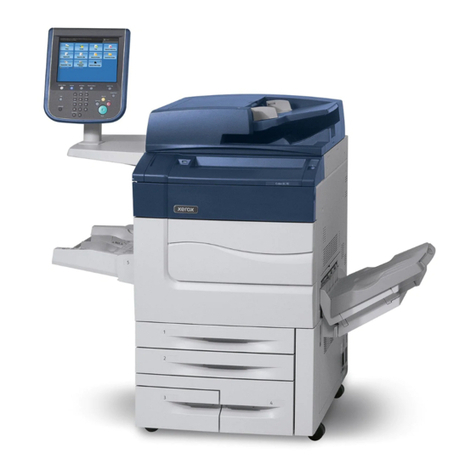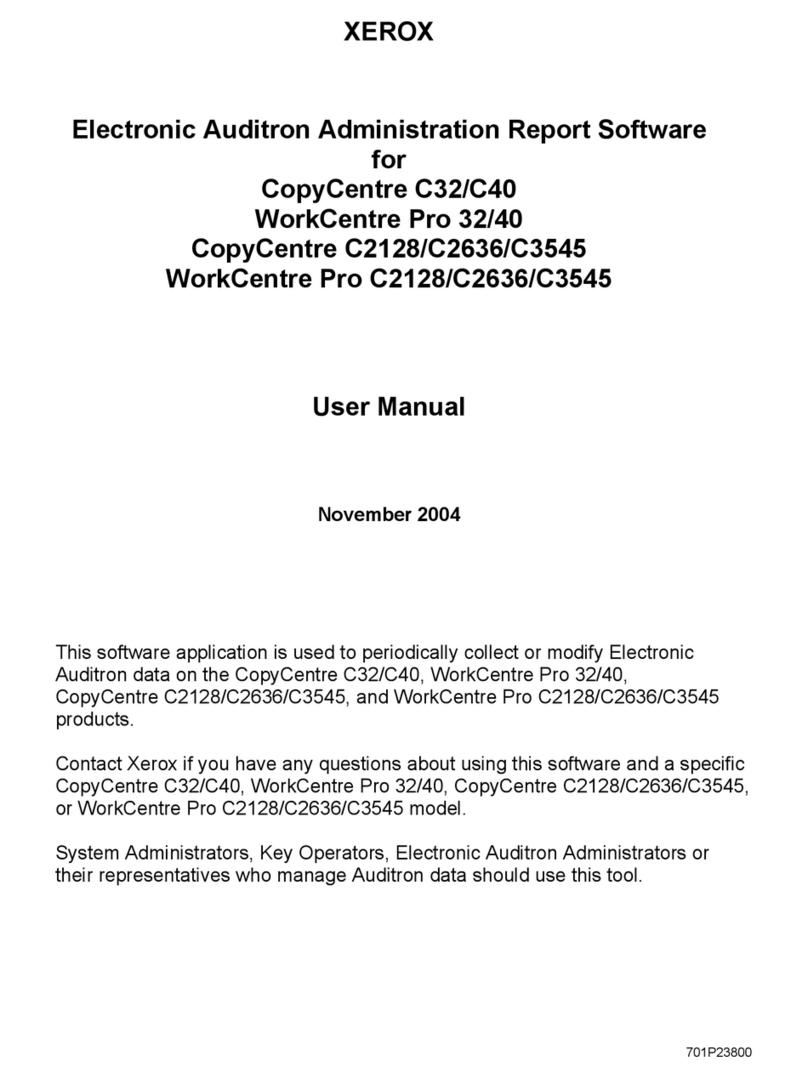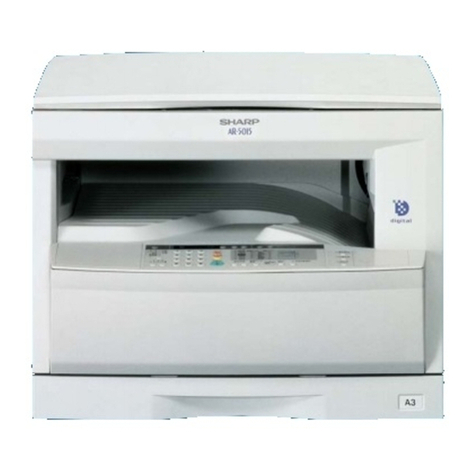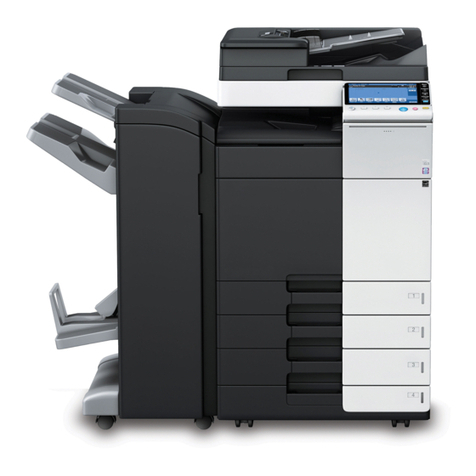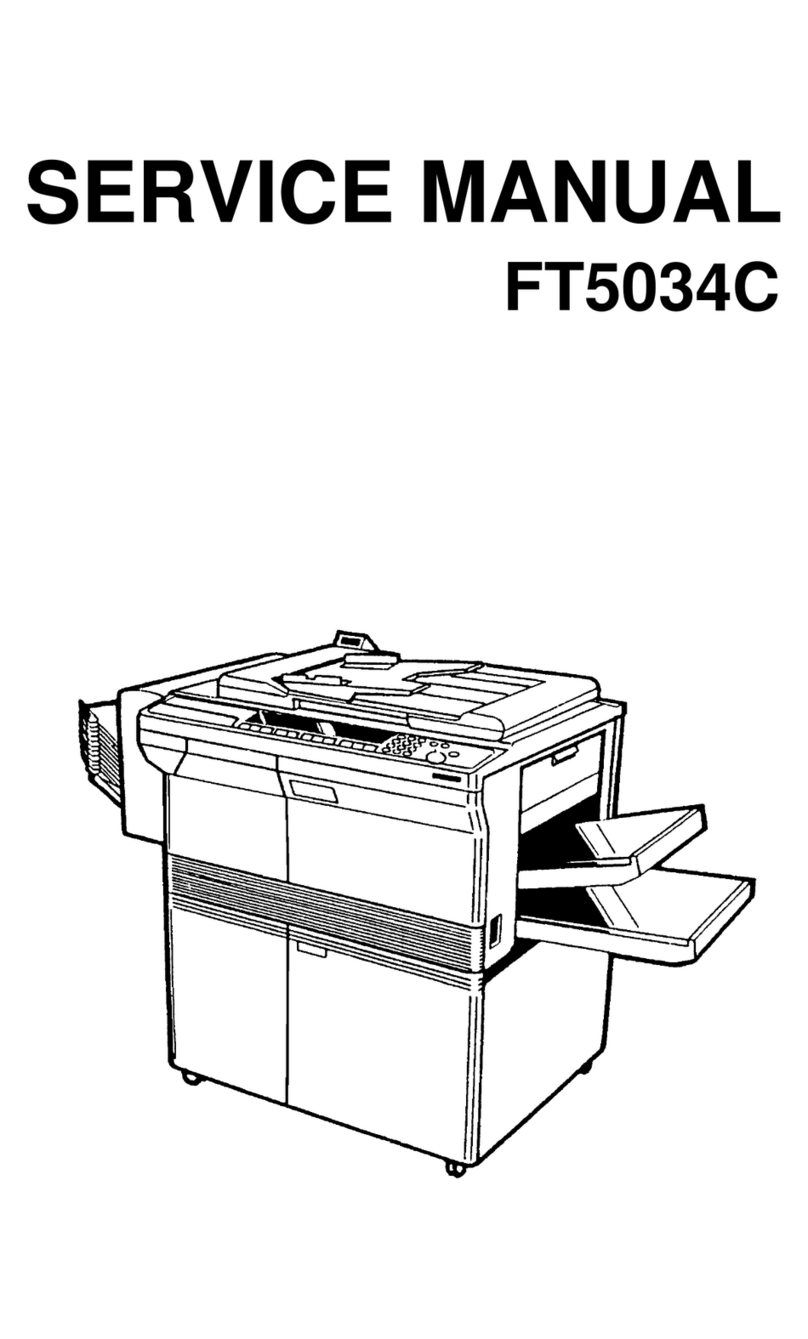2. COPYING PROCESS
-
F. Development (step 4)
/
Y
Blade
/
/
Blade
Stray-toner collecting electrode
Figure 2-107
The process in which the latent static image on
the surface of the photosensitive drum is turned
into a visible image is called development.
Since the
CL0000
is designed so that the
areas on the surface of the photosensitive drum
exposed to a laser beam will attract toner, the
toner is charged to a negative potential (the same
potential as in primary charging).
As shown in Figure 2-107, the developing
assembly consists of a developing cylinder and a
magnetic blade. The developing cylinder in turn
consists of a fixed magnet and a cylinder which
rotates around the magnet.
The developer is composed of toner (mainly
resins and dye) and carrier (iron powder) mixed at
a specific ratio. The toner and the carrier are
charged to a negative and a positive potential,
respectively, by friction against the rotating cylin-
der.
The developer is held in the form of a brush
over the surface of the cylinder within the mag-
netic field of the fixed magnet, and is deposited in
a uniform layer by a blade.
Figure 2-l
08
Double blanking pulses and a DC bias (nega-
tive component) are applied to the developing
cylinder to improve development efficiency and
reproduction of highlighted areas, resulting in a
developing bias with a larger negative than posi-
tive component.
During copying, toner is attracted to the light
areas of the photosensitive drum because of the
drum surface potential and the negative potential
of the developing bias, turning the latent static
image into a visible image. Excess toner is then
repelled by the photosensitive drum because of
the drum surface potential and the positive com-
ponent of the developing bias.
The electrode plate under the developing
cylinder is supplied with a high voltage (positive)
to attract stray toner, thereby preventing soiling of
the inside of the machine.
COPYRIGHT
Q
1997 CANON INC. CANON
CLClOOO
REV.1 MAY 1997 PRINTED IN JAPAN (IMPAIME AU JAPON) 2-5
